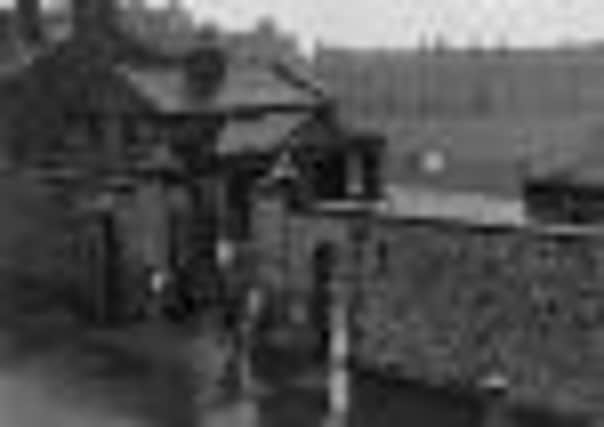The march of time’s exposed at military site


For others, Leith’s brown-bricked Fort House has simply been a distressing source of anti-social behaviour, the notorious council estate earning itself in recent years a reputation as one of the worst in Edinburgh.
As the local authority prepares to demolish the 1960s development – a decision that gained overwhelming support in the community – another side to “The Fort” has been unearthed.
Advertisement
Hide AdAdvertisement
Hide AdRemains of an old military fort built to protect Leith has been uncovered by archaeologists, who are excavating the site on behalf of the city council. Among the discoveries is a series of buildings, including a military magazine housing munitions, stable blocks and possibly even army barracks.


“It’s a fascinating bit of Edinburgh’s military history,” says John Lawson, right, curator of archaeology for the council. “It’s not often we get the chance to look at this sort of site. A lot of it has been demolished but it’s really good to get some remains surviving.”
The findings are giving John and his team lots to smile about as they dig deep in a bid to discover even more about a site with a rich and exciting history they already know lots about – its 18th-century perimeter walls a tell-tale sign for any passer-by.
Leith Fort was built in the 1780s after John Paul Jones – the Scot who founded the American navy – sailed up the Firth of Forth in 1779 with three warships and threatened to attack Leith.
Advertisement
Hide AdAdvertisement
Hide AdA battery of nine guns was hastily erected to cover the entrance to the harbour, but the authorities decided that a more substantial defence should be built. James Craig – who designed the New Town – was then commissioned to draw up plans for the fort.
But the story does not end there. The site was extended in the early 1800s during the Napoleonic Wars to house French prisoners of war making it one of the most fascinating locations in the city.
From the late 1800s onwards, the fort was used as the headquarters of the Royal Artillery in Scotland, with soldiers stationed at the barracks until the 1950s.
The old primary school was next door to the fort and children whose fathers were in the army would have lived in the soldiers’ quarters and attended the school.
Advertisement
Hide AdAdvertisement
Hide AdWhile most of the original fort’s interior was later demolished to make way for housing – namely the Fort House estate which was built in the early 1960s – the perimeter wall, entrance gate and guardhouse were all left standing and have become listed buildings and well-known landmarks.
But with the estate earmarked for demolition in the new year to make way for modern council housing – 102 affordable homes – archaeologists were brought in to excavate the site.
“We have a good lay-out of the 19th-century part of the Fort, but what we didn’t know was how much survived under the ground,” says John.
“We have found remains about half a metre underneath the top soil of stable buildings and magazine buildings which stored ammunition and possibly barracks.
Advertisement
Hide AdAdvertisement
Hide Ad“The fort seems to be built in two major parts. There’s the north part, which we are not looking at because there are still people living on the site, and the Napoleonic extension which dates back to the 18th century and is the area we are concentrating on.”
The detailed results of the findings will not be available for around two weeks, after which time the city’s archaeology team will work with the housing department to plan how to incorporate the remains into the new housing scheme.
“We will be working closely with our colleagues to integrate the archaeology into the new scheme,” says John.
“We are still in the early part of the process however and need to assess the findings. We can either leave the remains alone and build on top of them or build around them. The archaeology will be taken into consideration.”
Advertisement
Hide AdAdvertisement
Hide AdThis week, three archaeologists from Leith-based Headland Archaeology – the team the council commissioned to excavate the site – spent two days at Fort House hoping to capture a little piece of its history and bring it back to life.
As well as the series of unearthed buildings, they have discovered a ditch in the centre of the site which contained oyster shells and might be from earlier than the fort itself.
“The extension is on an 1817 plan and there’s quite a lot of detail on the first Ordnance Survey plan which shows the barracks, stores and stables,” says senior architect Liz Jones.
“We’ve found the foundations of some of the buildings and also a cobbled surface and possibly a cellar.
Advertisement
Hide AdAdvertisement
Hide Ad“In other places we’ve just found the lines of the walls in the building because they were knocked down to build Fort House.
“People had a different approach to heritage in those days.”
She believes the excavation has presented them with the ideal opportunity to get more information about the historic site out to the general public.
“There is little documented about the fort in comparison to the better known Cromwellian citadel, so its great that we are getting the chance to find out more about it and hopefully let people know more about this part of Leith’s history,” she says.